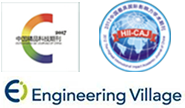Abstract:
The studies on concrete structures prestressed with external FRP tendons are reviewed in the aspects of FRP tendon, key technology and structural component, in this review. Firstly, the tensile properties and long-term behaviors of FRP tendon are introduced. The design-oriented values of creep-rupture stress, relaxation rate and the limits of maximum fatigue stress and fatigue stress range are provided. Secondly, the advantages and deficiencies of three main types of anchor for FRP tendon, and the methods of reducing the stress concentration on FRP tendon at anchor are elaborated. The newly-developed composite-wedge anchor is emphasized, which possesses an anchor efficiency coefficient exceeding 90%. Meanwhile, the deviation radius is recommended to be larger than 200 times of the radius the cross-section of FRP tendons, and the deviation angle of FRP tendons should not exceed 5°, based on the experimental results on the mechanical properties of deviated FRP tendons. Thirdly, the experimental results of concrete beams prestressed with external FRP tendons are reviewed, including monotonic loading, sustained loading and cyclic loading. The design methodologies in the codes at home and overseas are introduced. The accuracies of the calculating methods in the codes are evaluated using the experimental data of forty-two beams, and the methods in the Chinese code GB 50608—2020 are validated to be accurate in the design calculation for concrete structures prestressed with external FRP tendons. This paper is expected to actively promote the popularization and application of concrete structures prestressed with external FRP tendons.


 下载:
下载: